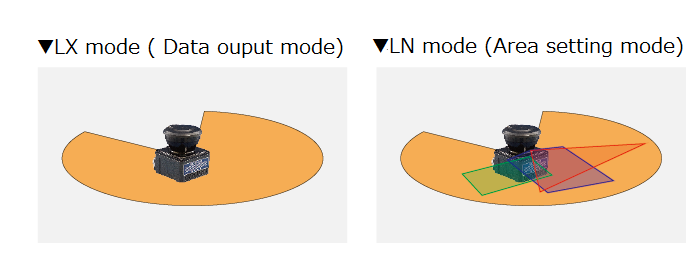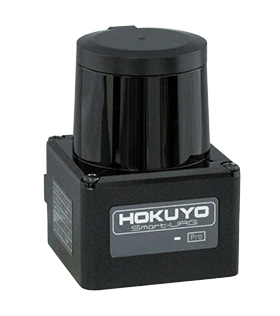How to choose the best LiDAR
How to choose a LiDAR
There is various line-up of range sensors (LiDAR), but you may be wondering how to choose one. You can easily choose by paying attention to the following points.
1. Detection distance
2. Output form
3. Outdoor characteristics
4. Scanning angle and resolution
We explain each item in detail as follows.
1. Detection distance
However, depending on the applications, it is necessary to pay attention to the value of black paper (reflectance 10%) because the actual detected object has various colors (reflectance).
2. Output form

There are two types of output: a data output type that directly outputs the distance information at each angle, and an area setting type that calculates the distance information at each angle in the sensor and determines the presence or absence of obstacles in the arbitrarily set area.
Select according to the application.
The data output type is often selected for environment recognition applications such as robots and AGVs, and the area setting type is often selected for obstacle detection.
3. Outdoor characteristics

When using it outdoors, check for the presence or absence of disturbance-resistant light / multi-echo function and filter function such as rain / fog. The disturbance resistance is expressed by the illuminance, and basically, the model with 100,000 lux can be used for outdoor(*fine weather) and 10,000 lux for indoors. However, please avoid looking directly at the sunlight.
What is multi-echo? Two types of lasers, a transparent body such as glass, rain, and fog, a laser that reflects off the transparent body when the laser hits the translucent body, and a laser that reflects through it and reflects off an object in the back, return to the sensor. It may come. Multi-echo is a function that can acquire multiple distance data returned at the same angle.
By using this function, it is possible to separate data such as rain and fog from data of detected objects.
In addition, the area setting type has an outdoor filter function that makes it difficult to detect rain, fog, etc. by applying the multi-echo function, which is an effective function outdoors in various environments.
4. Scanning angle and resolution
However, since the area setting type is judged by the data for three consecutive objects in order to detect in stable, it is necessary to have a size three times as large as tanθ × distance.
Summary
If there is something unclear about the selection, please feel free to contact us as we give you appropriate advice.
Check the specifications of the LiDAR
Read related column
- Scanning Rangefinder
- Photoelectric Switch
- Sensor for Iron & Steel Industry
- Optical Data Transmission Device



